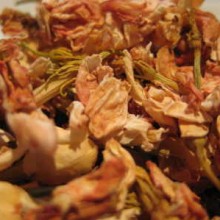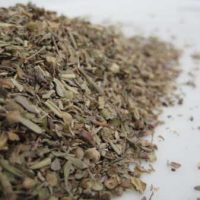Holy Thistle is a Mediterranean plant but has been introduced to other parts of the world, notably North America where it is considered n invasive weed. It is also known as Blessed Thistle, St. Benedict’s Thistle, or Spotted Thistle
Traditional Uses for Holy Thistle:-
The use of Holy Thistle has been recorded as far back as the early sixteenth century for treating smallpox, fever, anorexia, dyspepsia, indigestion, constipation, and flatulence.
Monks often grew Holy Thistle as a cure for smallpox – somewhat ineffectively this editor imagines.
Historically, people drank an infusion of Holy Thistle for digestive discomfort and liver or gall bladder problems, headache prevention, respiratory ailments, memory improvement and applied the cool infusion topically for external problems such as sores, boils and itchy skin.
The plant gained the title holy for its use in treating plague.
Holy Thistle is also used as a strong but gentle liver tonic herb, promoting metabolic activities in the liver cells and toxin elimination. It is especially noted as a tonic herb for women.
Some individuals use this herb, as they would its cousin, Milk Thistle, as a remedy for gallbladder and liver disorders.
It has some reputation for helping to heal open wounds where an infusion is used topically to clean the wound and continued as a treatment for the wound or the powdered herb being applied to the wound
It has no culinary use really although some ancent texts mention it thus. It is incredibly bitter and unpalatable.






